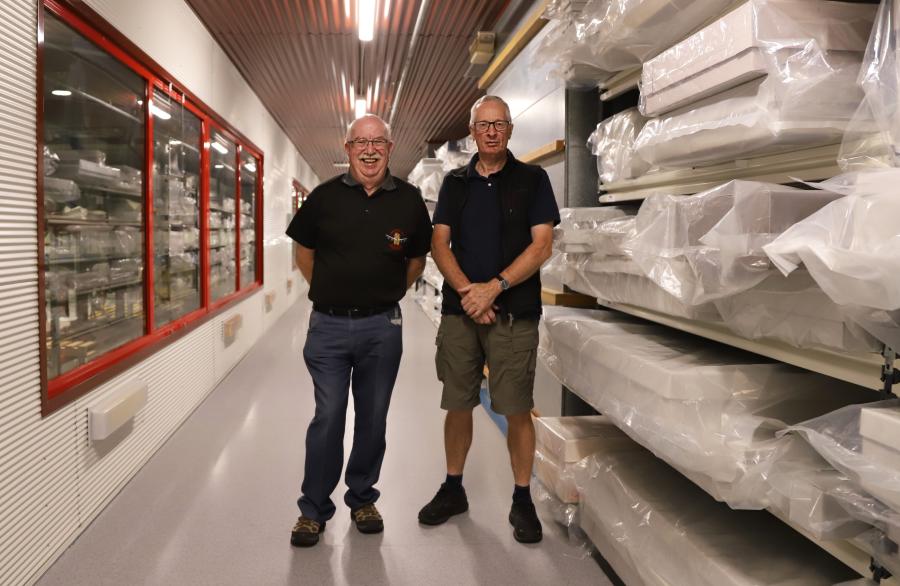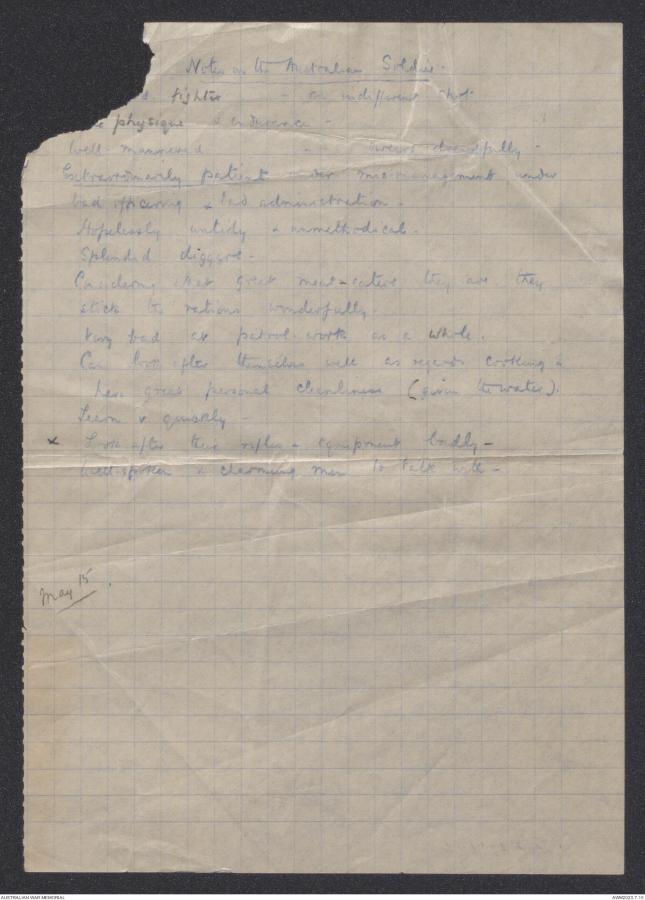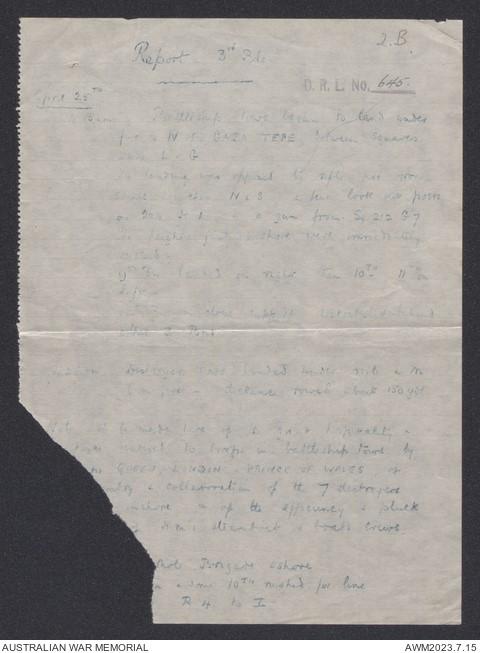Volunteers find document providing fresh information on Gallipoli landings

Memorial volunteers, Ian Haidon and Steve Daniels
The landings at Anzac Cove of 25 April 1915 have been covered in depth by historians for more than a century. Due to the careful attention of Memorial volunteers, Ian Haidon and Steve Daniels, a previously inaccessible report of the landings and first week of the campaign by Colonel E. G. Sinclair-Maclagan, the commanding officer of the 3rd Australian Infantry Brigade, is now available.
A carbon copy of the report had been donated to the Memorial’s library in 1934 by A.M. Ross, a captain and staff officer with 3rd Brigade at the time of the landings. Due to the faintness of this copy, and the similarity of the first few entries to that of the war diary of the 3rd Brigade, however, it was thought to be a duplicate of the war diary. Until recently, it was largely unused.
Memorial volunteers Ian Haidon and Steve Daniels were examining library collection material for unique items when they came across the report. They soon realised it was not a copy of the war diary but a more thorough account of the first seven days of the 3rd Brigade during the Gallipoli campaign.
While the war diary makes reference to the enemy counterattacking at 8:10 am and a general statement about counter attacks dying down at 4 pm, the Sinclair-Maclagan report list three separate counter attacks, occuring around 8:05-8:15 am, 3-4 pm and 5-6 pm. There are also variations in the map coordinates given by the report and the war diary; it is not known which set of coordinates is the more accurate.
Sinclair-MacLagan, Commanding the 3rd Brigade in front of Headquarters mess at Bray, France c. December 1916.
Sinclair-Maclagan and his daughter Isobel on the troopship Orvieto. Photographer unknown. PS0112
Perhaps the most interesting part of the document is the last page, which appears to have been written separately by the same author. Written on 15 May, “Notes on the Australian Soldier” gives some interesting (and partially contradictory) opinions on Australian soldiers only a few weeks into the Gallipoli campaign. It is not known if these thoughts and observations came from Sinclair-Maclagan, Captain Ross, or if the author was compiling the opinions of others.

The Australian soldier is described as being a skilled fighter, but “an indifferent shot”; “Well mannered” and “Well spoken & charming men to talk with”, but “swears dreadfully”; while being “Hopelessly untidy & unmethodical”, they also “have great personal cleanliness”; and they are said to be “Splendid diggers”, referring to their ability to entrench as opposed to their later nickname.
The Australian soldier is described as being a skilled fighter, but “an indifferent shot”; “Well mannered” and “Well spoken & charming men to talk with”, but “swears dreadfully”; while being “Hopelessly untidy & unmethodical”, they also “have great personal cleanliness”; and they are said to be “Splendid diggers”, referring to their ability to entrench as opposed to their later nickname. Perhaps most interesting is the observation, “Extraordinarily patient under mismanagement, under bad officering & bad administration”. It is remarkable that an officer made this comment so early in the campaign – judging the quality of officers and administration, and implying that troops had suffered “mismanagement”. The underlining of the words “Extraordinarily patient” suggests sympathy for the Australian soldiers.
The invaluable work of volunteers such as Ian Haidon and Steve Daniels is making more material available for researchers.


